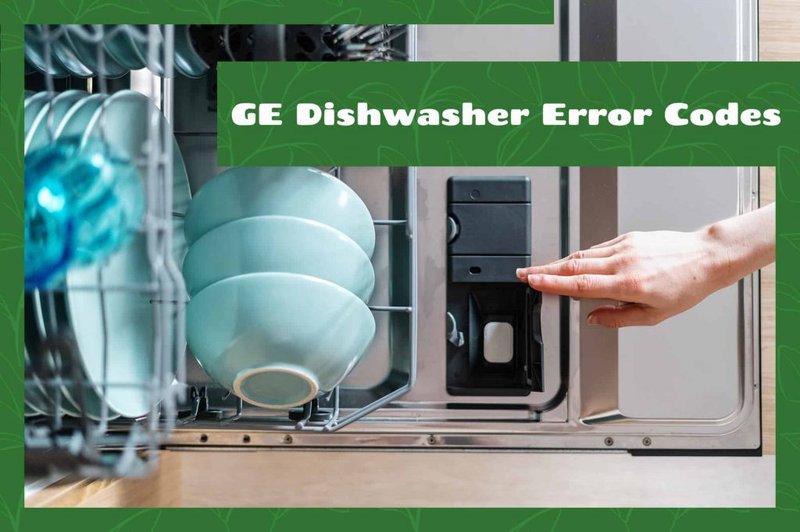
Imagine your GE dishwasher as a mini car wash for your dishes. Inside, it has a pump that circulates water, making sure each plate and glass gets the attention it deserves. When the dishwasher can’t circulate water properly, it throws up its hands and gives you the E2 code—essentially saying, “Houston, we have a problem.” But before you panic, let’s break it down into simple terms and figure out how to get things back to tip-top shape.
Understanding the Inner Workings of Your Dishwasher
How does your dishwasher function, anyway? Think of it like a little spaceship for your dishes. The water inlet valve lets water in, which is then heated and mixed with detergent to blast away grime. The pump, our star of the show, circulates this soapy water, ensuring every dish is coated, scrubbed, and rinsed. If something goes awry, like with our current E2 situation, the pump can’t do its job efficiently.
When your dishwasher flashes that E2 error, it’s often related to something going astray with the pump motor or the circulation process. This can be compared to trying to wash your car with a garden hose that’s kinked—water can’t flow freely, and the job doesn’t get done right. The pump is crucial for driving the water throughout the machine, and when it’s not functioning, your dishes stay dirty, and the whole system gets out of sync.
Think of fixing this issue as unclogging a drain. You’re looking to remove any stickiness in the system that blocks the water’s path. This might involve checking the motor itself, just like inspecting an engine that won’t start. Often, the problem requires a bit of investigation, but worry not—I’ve got a few tips to guide you through the process with minimal hassle.
Common Culprits Behind the E2 Error
So what causes this pesky E2 error to pop up on your GE dishwasher? It might seem like a mystery at first, but there are several usual suspects. One common issue could be blockages—think of these like roadblocks in the water’s journey through your dishwasher’s insides. Food particles, debris, or even soap buildup can create obstacles that the pump just can’t power through.
Then there’s the possibility of a faulty pump motor. Like a car that just won’t start, a motor that’s given up the ghost can’t circulate water efficiently. This isn’t an uncommon problem with dishwashers that have been around the block a few times. Wear and tear take their toll, and suddenly, the motor isn’t up to speed anymore.
Lastly, let’s not forget about electrical issues. Wires can get loose or damaged over time, disrupting the signals between your dishwasher’s brain and its pump. If you’ve ever had your phone refuse to charge because of a faulty cable, you can relate to this kind of problem. It’s an often-overlooked issue, but it’s worth considering if the other fixes don’t yield results.
Steps to Resolve the E2 Error Code
You’ve identified the problem, so what’s next? First things first, safety! Always make sure your dishwasher is unplugged or the circuit is turned off before diving in. Then, take a closer look. Check for blockages in the filter or pump area—food particles might be causing the water to back up. Cleaning this area could be your ticket to a smooth-running dishwasher.
If cleaning out debris doesn’t do the trick, it might be time to inspect the pump motor. Is it making strange noises, or not running at all? This part might need a repair or replacement, which could be a DIY project if you’re handy, or it might warrant a call to a professional. It’s like getting a mechanic to take a look at your car when it won’t start—sometimes you need expert help.
Finally, don’t overlook the wiring. Are all the connections secure? If you spot any damaged wires or loose connections, you might need to reattach them or replace faulty cables. This could resolve issues without the need for part replacements. Remember, sometimes it’s the smallest fixes that can make the biggest difference.
Preventing Future E2 Errors
Now that you’ve tackled the E2 error, let’s talk prevention. Maintaining your dishwasher and avoiding this hassle in the future can be pretty straightforward. First, aim to rinse your dishes before loading them. This doesn’t mean a full scrub, but getting rid of large food particles can prevent future blockages.
Regularly cleaning your dishwasher’s filter is also a great practice. Imagine it like cleaning out a coffee filter—if you let old grounds sit there, you’re going to have a bad cup of coffee. Similarly, a clean filter ensures better water flow and overall performance for your dishwasher.
Lastly, keep an eye out for any signs of wear and tear. Listen to your dishwasher—if it starts sounding different or if you notice water isn’t circulating like it used to, it might be time for a checkup. It’s like having regular health checkups for your car; catching a problem early can save a lot of headaches later on.
By following these simple steps and staying vigilant, you can keep the dreaded E2 error code at bay. Remember, a little maintenance can go a long way in making sure your trusty dishwasher keeps running smoothly for years to come.